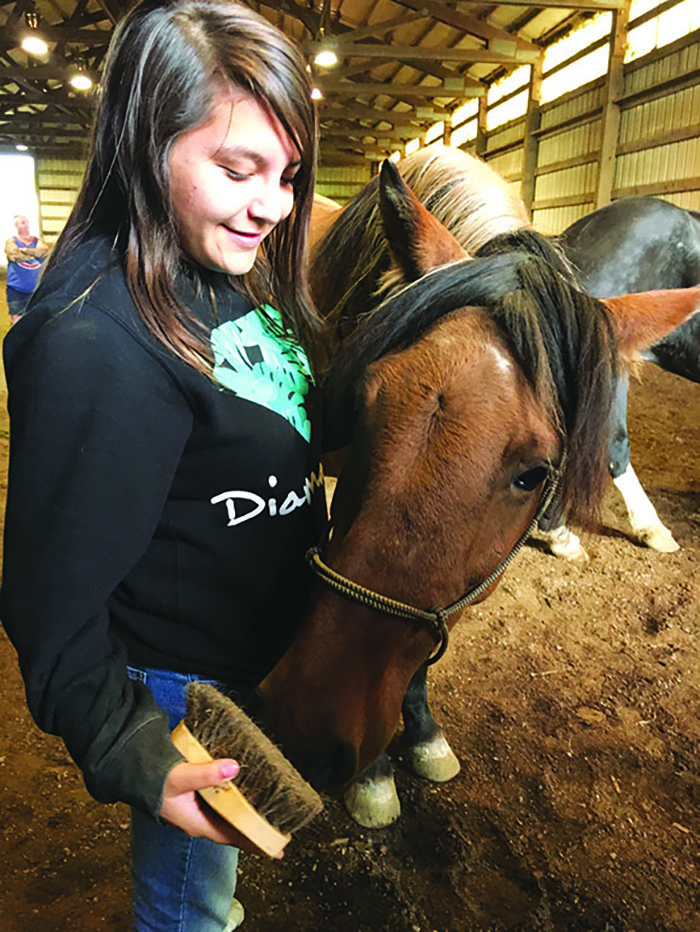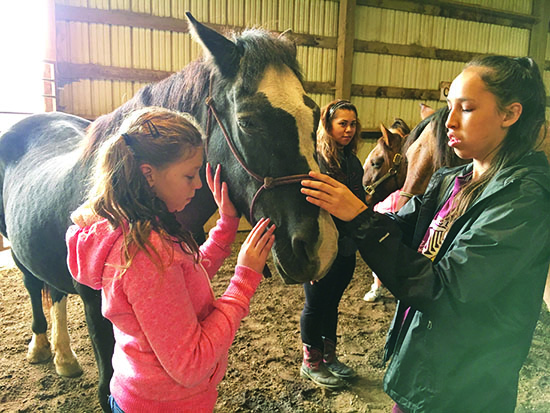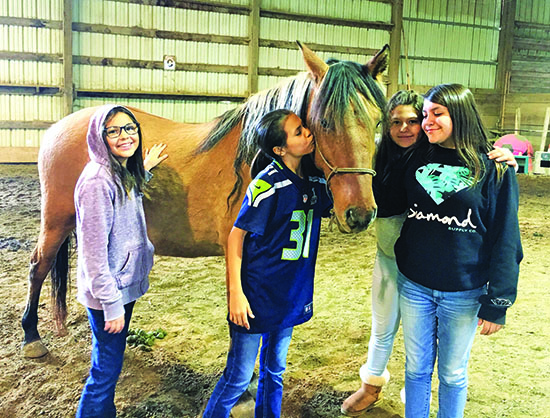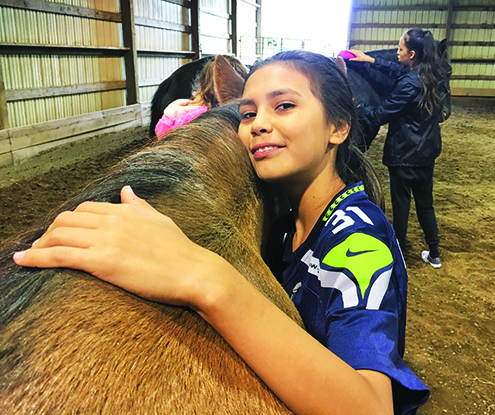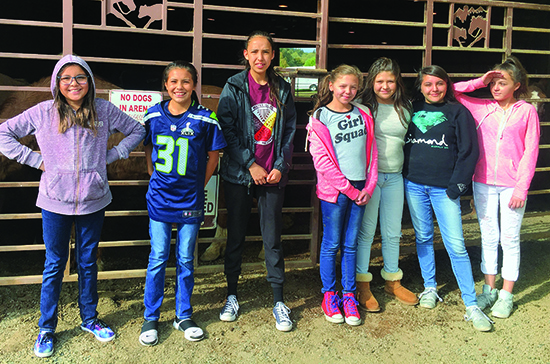By Micheal Rios, Tulalip News. Photos courtesy of Monica Holmes
The horse was a major part of Native American history and still plays a vital role in enabling Native youth to connect to their heritage of being caretakers of Mother Earth and all her animals. A new form of spiritual healing can also be derived from individuals and their interaction with the majestic horse, called equine therapy.
Using horses in a therapeutic setting offers youth clear opportunities to learn about themselves and others in an effective way. This is why on October 6 the Girl’s Talking Circle took a trip to Cedar Groves Stables in Stanwood, WA for a fun-filled, therapeutic afternoon.
“Our trip to Cedar Groves Stables was for an ‘Exploring Healthy Boundaries’ workshop with the goal to enlighten the youth about their own inherent boundaries and the need to adjust those boundaries based on the people they encounter along their journey,” explained event coordinator and para-pro Monica Holmes. “We did many exercises individually and with one another that illustrated each person’s ability to tap into their own gut instinct to determine where they position themselves, how they behave around others, and how they may need to regulate their emotional output.”
Horse and human encounters provide opportunities for learning about relationships and further understanding about boundaries. Once the girls transitioned inside the stables and began interacting with the herd of horses, they found themselves using the personal boundary skills they just learned and adjusting to the horses’ needs.
“I learned horses sometimes feel trapped or unsafe, so they tell us to back off by moving their heads and trying to get away,” beamed 11-year-old tribal member, Tieriana McLean. “When we humans did boundary work we learned that we sometimes flinch or feel stressed or react and that means we were setting our own boundaries with others.”
Horses, much like people, are social creatures and require mutual trust and respect in order to engage in a productive relationship. If a horse is acting stubborn or defiant, then it can often be understood as a lack of engagement and thoughtfulness on the part of the person.
“I liked learning about how you need to calm yourself around the horses, so they’ll learn to trust you and won’t hurt you,” remarked 14-year-old Ariyah Guardipee (Salish Kootenai).
For the girls, making a connection with a horse required self-awareness in order to produce positive intentions, while also reading the emotional output of the horse. Once a balance has been reached, the girls were able to approach the horses and establish a bond. How much space to give a certain horse and when or if they could reciprocate attention or affection is a learned skill they showcased brilliantly.
“Rather than shying away from them or feeling overwhelmed by the horses’ size, the girls were zoned into reading the horses individually,” added Monica. “They adjusted their interactions accordingly, so the horse was on the receiving end of the time and attention it wanted and needed. Miraculously, each girl walked away with a deeper connection to the horses, each other and themselves.”
Volunteer chaperone and tribal member, Darkfeather Ancheta, jumped at the opportunity to attend the workshop with the Girls Talking Circle. She witnessed first-hand the girls learn personal boundary skills and then use them to develop bonds with the horses. “It was very powerful! The girls’ energy and moods changed instantly around the horses. To watch them react, learn, and respond the way they did was so amazing. This program can change lives for the better,” stated Darkfeather.
The connection established with these equine companions brought out the hidden inner strength and courage of each and every youth participant. Overcoming doubts and developing confidence are only a couple of supplemental results they also enjoyed from their time at the Stables.
Activities that teach skills ‘outside of the box’ are vital to programs like the Girls Talking Circle for developing healthy, well-rounded individuals and groups of youth in our community. These are experiences the youth and those adults who are privileged enough to work with them won’t soon forget.
